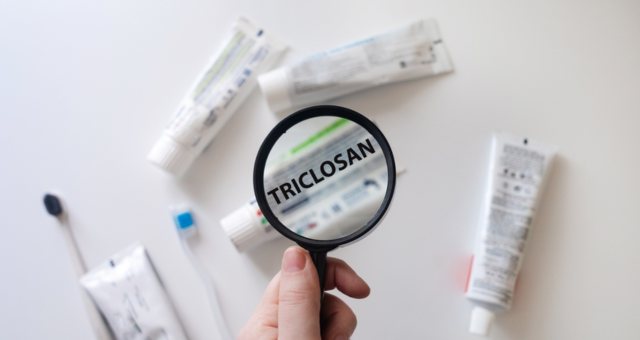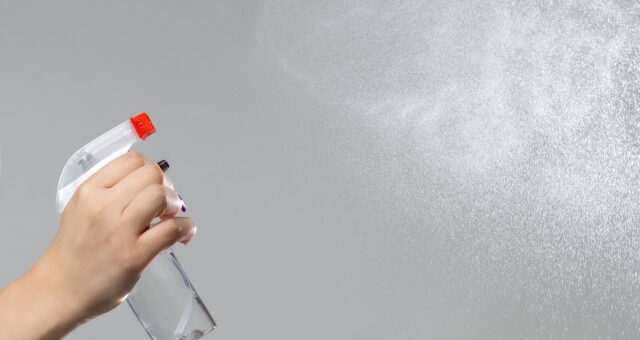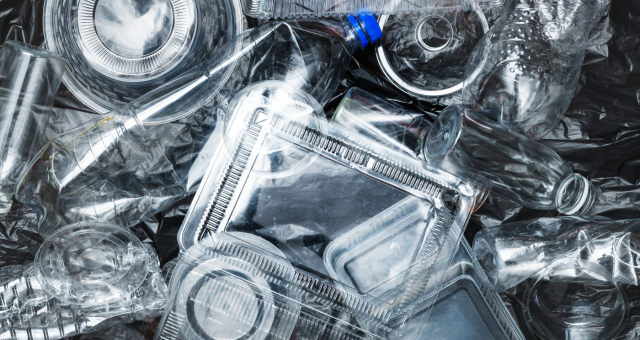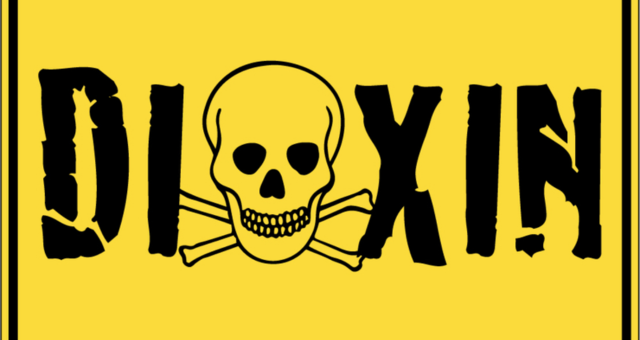Medically Reviewed by Lucas Rosa, PhD in Molecular Biology

In this article, we’ll explore what triclosan is, where it’s commonly found, and how it affects hormone balance, particularly thyroid function, reproductive hormones, and overall endocrine health.
What Is Triclosan?
Triclosan is a widely used antibacterial and antifungal agent that has raised concerns over its potential health effects, particularly its ability to disrupt the endocrine system.
Research has shown that this chemical does much more than just kill germs; it can interfere with hormone production, alter metabolic functions, and contribute to long-term health issues. (1)
What Is Triclosan and Its Source?
Triclosan was initially developed in the 1960s as a hospital-grade antimicrobial agent. Over the decades, it was incorporated into a range of consumer products, (2) including:
- Personal Care Products: Certain personal care and hygiene products such as toothpastes, body washes, deodorants, hand sanitizers, and soaps.
- Cosmetics: Some brands are still using triclosan in their makeup kits, skincare, and hair care products.
- Household Items: Present in dishwashing liquids, detergents, cutting boards, and kitchen sponges.
- Medical Products: Included in some surgical scrubs and antibacterial wound treatments.
- Clothing and Textiles: Found in some fabrics and athletic wear for its antimicrobial properties.
Even though the U.S. FDA banned triclosan in antibacterial soaps in 2016, it still lingers in many other products. Since it is commonly washed down drains, it accumulates in water sources, soil, and even the food supply, leading to continued exposure.
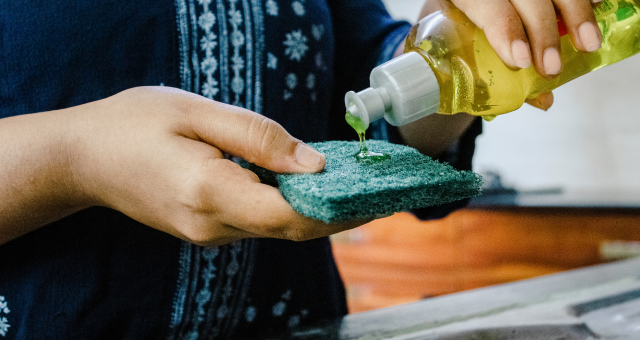
How Triclosan Disrupts the Endocrine System
The endocrine system regulates essential functions like metabolism, growth, reproduction, and stress responses through hormones. Triclosan has been classified as an endocrine disruptor (EDC) because it interferes with hormonal activity, leading to imbalances that can affect health in various ways.
Triclosan Affects the Thyroid
The thyroid is essential for managing metabolism, energy production, and overall bodily functions. Triclosan can disrupt thyroid function by: (3)
- Inhibiting Thyroid Hormone Production: Research suggests that triclosan can lower thyroid hormone levels, potentially leading to hypothyroidism symptoms like fatigue, weight gain, depression, and a slowed metabolism.
- Disrupting Iodine Absorption: The thyroid depends on iodine for hormone production. Triclosan competes with iodine, which can cause iodine deficiency and impaired hormone synthesis.
- Altering Thyroid Receptor Activity – Triclosan can mimic or block thyroid receptors, disrupting the feedback loop that regulates hormone production.
Research in animal models has shown that prolonged exposure to triclosan significantly lowers circulating thyroid hormone levels, raising concerns about its potential effects in humans, especially in children and pregnant women.
Triclosan Impacts Sex Hormones
Estrogen and testosterone are crucial sex hormones that regulate reproductive health, muscle development, bone density, and even brain function.
Any imbalance in these hormones can lead to significant health concerns, including fertility issues, mood disorders, and metabolic changes. (4)
How Triclosan Affects Estrogen
- Mimics Estrogen (Xenoestrogen): Triclosan can bind to estrogen receptors, mimicking the hormone’s effects. This can lead to excess estrogen, disrupting the body’s natural balance and increasing the risk of conditions like endometriosis, fibroids, and estrogen-dominant disorders.
- Alters Estrogen Metabolism: Research suggests that triclosan may increase the breakdown of natural estrogen, leading to hormonal fluctuations that can impact menstrual cycles and reproductive health.
- Increases Breast Cancer Risk: Because triclosan can mimic estrogen, some studies have raised concerns about its potential role in hormone-sensitive cancers, particularly breast cancer, by promoting the growth of estrogen-responsive cells.
How Triclosan Affects Testosterone
- Suppresses Testosterone Production: Triclosan has been linked to a reduction in testosterone levels by disrupting the function of Leydig cells (which are responsible for testosterone synthesis in the testes).
- Reduces Sperm Quality and Fertility: Studies in animal models have shown that triclosan exposure is associated with lower sperm counts, decreased sperm motility, and abnormal sperm morphology, raising concerns about its impact on fertility.
- Interferes with Androgen Receptors: Triclosan can act as an anti-androgen, blocking the activity of testosterone. This can result in low testosterone symptoms, including reduced lean muscle mass, fatigue, lowered libido, and mood changes.
Triclosan Affects the Adrenal Gland
The adrenal glands produce various hormones that play a critical role in our stress response, electrolyte balance, and blood pressure regulation. Disruptions in adrenal function can lead to conditions like adrenal fatigue, chronic stress, and metabolic disorders. (5)
Triclosan can affect the adrenal gland by:
- Altering Cortisol Production: Research suggests that triclosan may interfere with adrenal hormone synthesis, leading to excess or deficient cortisol levels. This can contribute to chronic fatigue, impaired immune function, and difficulty managing stress.
- Disrupting the HPA Axis (Hypothalamic-Pituitary-Adrenal Axis): The HPA axis controls how the body reacts to stress. Triclosan exposure can contribute to the impairment of this system, leading to symptoms of anxiety, depression, and sleep disturbances.
- Influencing Blood Sugar and Metabolism: Since cortisol plays a role in glucose metabolism, triclosan-related disruptions can increase the risk of insulin resistance, weight gain, and metabolic syndrome.

Potentially Could Cause Developmental Issues
Hormonal imbalances during childhood and adolescence can have long-lasting effects on growth, development, and reproductive health. Some studies have suggested that triclosan exposure may be linked to early puberty and altered hormone levels in children. (6)
Triclosan can contribute to developmental issues by:
- Mimicking Estrogen Activity: As a xenoestrogen, triclosan may stimulate early breast development and disrupt normal puberty timing in those assigned female at birth.
- Suppressing Testosterone: Lower testosterone levels due to triclosan exposure can contribute to delayed puberty and impaired development of secondary sexual characteristics in those assigned male at birth.
- Affecting Fetal and Infant Development: Since triclosan crosses the placenta and has been detected in breast milk, prenatal and early-life exposure may impact hormonal programming in infants, potentially leading to long-term endocrine disruptions.

Triclosan’s Link to Metabolic Disorders
Hormones are crucial for managing metabolism, fat storage, and appetite regulation. Exposure to endocrine disruptors like triclosan has been associated with obesity, insulin resistance, and metabolic imbalances. (7)
Triclosan can contribute to weight gain and metabolic imbalance by:
- Disrupting Thyroid Hormone Activity: Triclosan-related hypothyroidism can reduce metabolic efficiency, resulting in weight gain and challenges with weight loss.
- Disrupting Insulin Sensitivity: Some studies have suggested that triclosan exposure is associated with higher fasting blood glucose levels, increasing the risk of type 2 diabetes and metabolic syndrome.
- Influencing Gut Microbiome: The gut microbiome plays a vital role in supporting metabolism and hormonal balance. Triclosan’s antibacterial properties may alter gut bacteria composition, leading to inflammation, poor digestion, and metabolic disturbances.
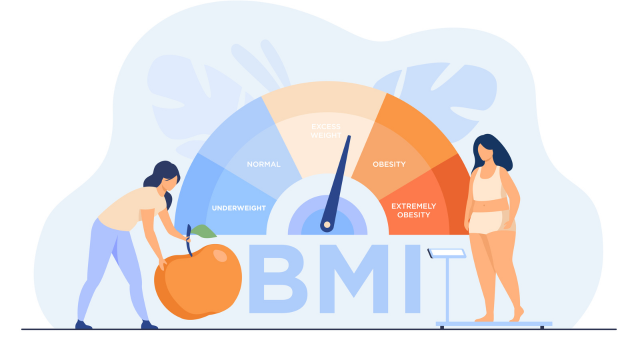
image by pch.vector on freepik
How to Reduce Triclosan Exposure
Since triclosan is still found in many consumer products, limiting exposure is key to helping maintain hormonal balance. Here’s how:
- Choose Triclosan-Free Products: Look for natural or organic personal care and household products that do not contain triclosan. Check labels carefully, as it may still be used in some items.
- Use Regular Soap and Water: Triclosan-based antibacterial soaps offer no added benefits over regular soap and water in preventing illness. Opt for plain soap and natural disinfectants instead.
- Opt for Triclosan-Free Toothpaste: Some toothpaste brands still contain triclosan. Look for alternatives with natural antimicrobial ingredients like coconut oil or xylitol.
- Filter Your Water: As triclosan contaminates water sources, using a high-quality water filter can help minimize exposure.
- Eat Organic and Avoid Highly Processed Foods: Since triclosan can be found in food packaging and contaminated water, opting for fresh, organic, and minimally processed foods can help reduce ingestion.
- Support Your Liver and Detox Pathways: Since the liver processes toxins, consuming detoxifying foods like cruciferous vegetables, turmeric, and green tea can help expel endocrine disruptors.
-May-16-2025-10-08-49-3159-PM.png)
image is by freepik
Conclusion
Triclosan, once thought to be a harmless antibacterial agent, has been proven to be a potent endocrine disruptor. It has widespread effects on thyroid function, reproductive hormones, adrenal health, and metabolism.
While regulatory measures have limited its use in some products, it remains a hidden threat in many household and personal care items.
By becoming aware of triclosan’s risks and actively choosing triclosan-free alternatives, you can protect and improve your hormonal health.
References
- Weatherly LM, Gosse JA. Triclosan exposure, transformation, and human health effects. J Toxicol Environ Health B Crit Rev. 2017;20(8):447-469. doi: 10.1080/10937404.2017.1399306. PMID: 29182464; PMCID: PMC6126357.
- Weatherly LM, Gosse JA. Triclosan exposure, transformation, and human health effects. J Toxicol Environ Health B Crit Rev. 2017;20(8):447-469. doi: 10.1080/10937404.2017.1399306. PMID: 29182464; PMCID: PMC6126357.
- Homburg M, Rasmussen ÅK, Ramhøj L, Feldt-Rasmussen U. The Influence of Triclosan on the Thyroid Hormone System in Humans – A Systematic Review. Front Endocrinol (Lausanne). 2022 Jun 2;13:883827. doi: 10.3389/fendo.2022.883827. PMID: 35721761; PMCID: PMC9202756.
- Maksymowicz M, Ręka G, Machowiec P, Piecewicz-Szczęsna H. Impact of Triclosan on Female and Male Reproductive System and Its Consequences on Fertility: A Literature Review. J Family Reprod Health. 2022 Mar;16(1):33-42. doi: 10.18502/jfrh.v16i1.8592. PMID: 35903762; PMCID: PMC9287115.
- Maksymowicz M, Machowiec PA, Ręka G, Korzeniowska A, Leszczyk P, Piecewicz Szczęsna H. Mechanism of action of triclosan as an endocrinedisruptingchemical with its impact on human health. Literature review. J Pre-Clin Clin Res. 2021; 15(4): 169–175. doi: 10.26444/jpccr/142065
- Gan H, Lan H, Hu Z, Zhu B, Sun L, Jiang Y, Wu L, Liu J, Ding Z, Ye X. Triclosan induces earlier puberty onset in female mice via interfering with L-type calcium channels and activating Pik3cd. Ecotoxicol Environ Saf. 2024 Jan 1;269:115772. doi: 10.1016/j.ecoenv.2023.115772. Epub 2023 Dec 3. PMID: 38043413.
- Yueh MF, He F, Chen C, Vu C, Tripathi A, Knight R, Karin M, Chen S, Tukey RH. Triclosan leads to dysregulation of the metabolic regulator FGF21 exacerbating high fat diet-induced nonalcoholic fatty liver disease. Proc Natl Acad Sci U S A. 2020 Dec 8;117(49):31259-31266. doi: 10.1073/pnas.2017129117. Epub 2020 Nov 23. PMID: 33229553; PMCID: PMC7733785.
Check Out
HF Swaps
Better products for better hormone health.

